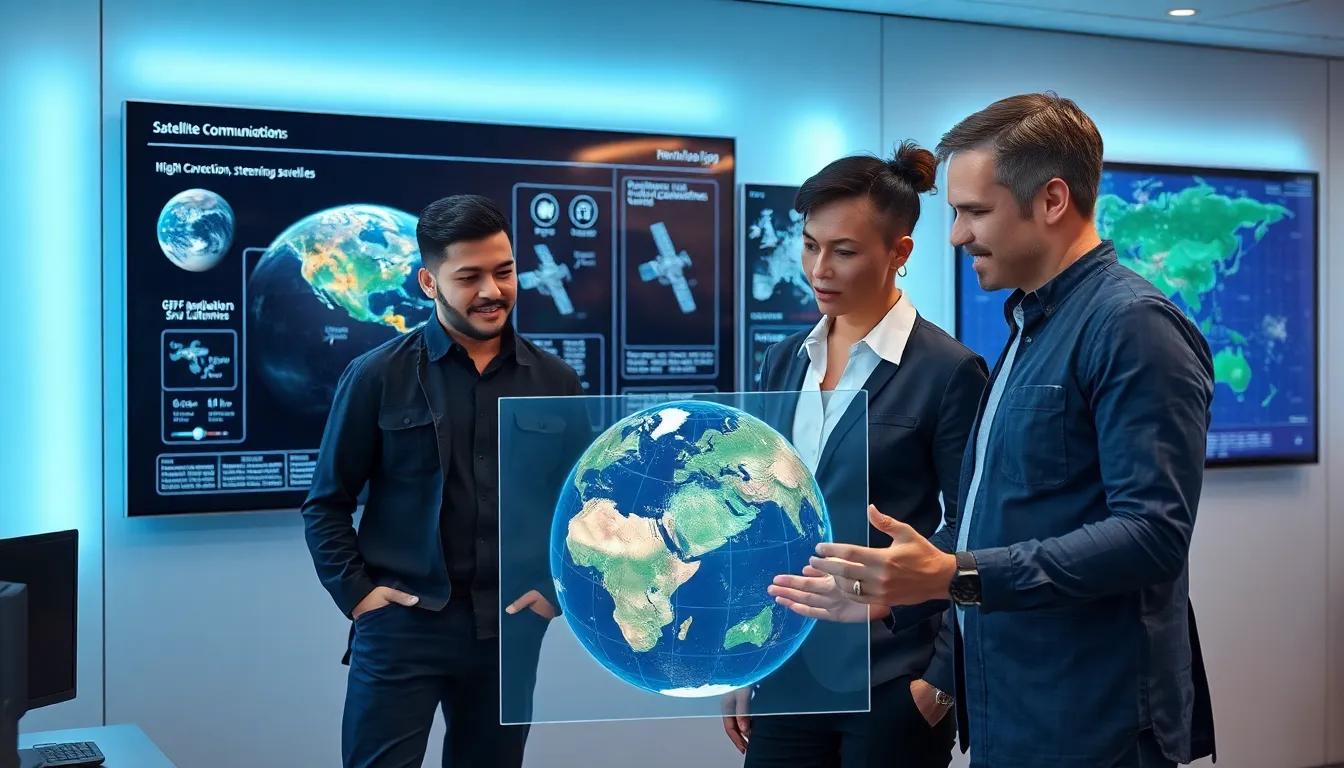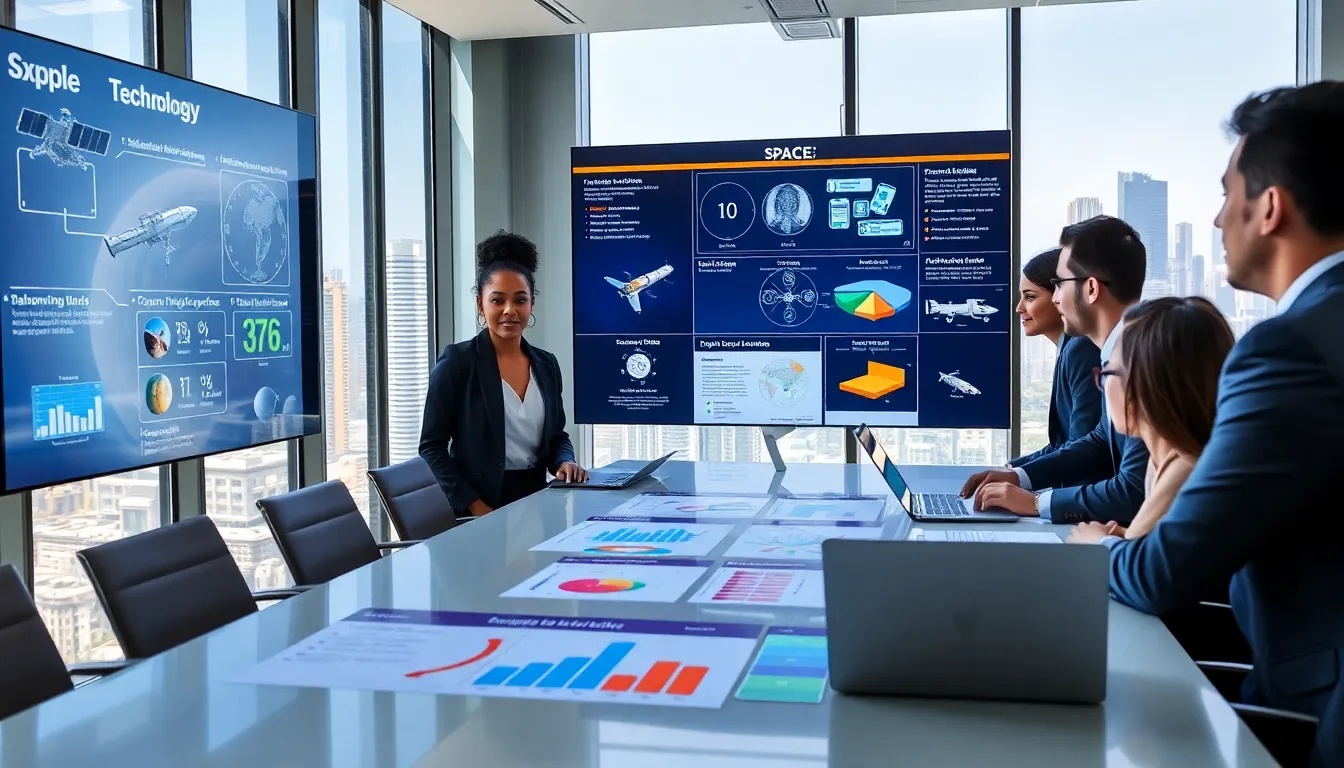Space technology isn’t just rocket science, it’s the key to unlocking the universe, and its impact is more relatable than you might think. Fascinating, isn’t it? From satellites orbiting high above our heads to rovers basking under the Martian sun, the technologies developed for space exploration have transformed how we live on Earth. In this text, we’ll explore space technology examples that not only capture the imagination but also improve our everyday lives, without the need for a degree in astrophysics.
Table of Contents
ToggleSatellite Communication Technologies

Earth Observation Satellites
Earth observation satellites are the planet’s watchful eyes in the sky. They collect critical data about weather patterns, wildlife migration, and even natural disasters. Imagine tracking a hurricane before it wreaks havoc or studying the deforestation rates in the Amazon. They provide invaluable insights that help governments, scientists, and environmentalists make informed decisions. The methods used to capture this data involve high-resolution imaging technology that boasts accuracy and detail.
Communication Satellites
Communication satellites revolutionize how information travels. Communication satellites ensure that your phone calls, texts, and even Netflix binges happen seamlessly, regardless of whether you’re in a bustling city or a remote village. They help global broadcasts, keep us connected through the Internet, and even enable military communications in critical situations. Not to mention, they power your favorite streaming services, so you never miss a single episode of your beloved series.
Navigation Satellites
These clever devices help us know where we’re going (and remind us when we’ve missed an exit). Navigation satellites, primarily part of global positioning systems (GPS), give users precise location services. Whether it’s navigating city streets or hiking trails, they make exploring easier and safer. Plus, they play a vital role in industries like aviation and shipping, allowing for efficient routes and better safety standards.
Space Exploration Technologies
Rovers and Landers
Imagine sending a robot to another planet to explore. Rovers like Curiosity and Perseverance traverse the Martian terrain, analyzing soil samples and capturing breathtaking images of the red planet’s surface. These mobile laboratories have contributed immensely to our understanding of Mars, including hints at the planet’s potentially habitable past. Meanwhile, landers go for the touchdown, analyzing their immediate environment through instant data collection.
Space Probes
Space probes are the ultimate long-distance travelers, venturing into the depths of our solar system and beyond. Stardust, Voyager 1, and New Horizons have sent back astonishing information about planets, asteroids, and comets, enhancing our understanding of the universe’s origins. A number of these probes have made astonishing voyages that could take decades to complete, proving that patience is indeed a virtue in space exploration.
Crewed Spacecraft
When humans are involved, the stakes get higher. Crewed spacecraft, such as NASA’s Orion and SpaceX’s Crew Dragon, carry astronauts into low Earth orbit and beyond. These vessels are modern marvels, equipped with advanced life support and navigation systems, enabling safe journeys through the cold void of space. Each mission brings us closer to sustainable space travel and even longer journeys, potentially to Mars.
Emerging Technologies in Space
Reusable Launch Vehicles
Gone are the days of single-use rockets. Reusable launch vehicles, like SpaceX’s Falcon 9, have reshaped the economics of access to space. By landing and reusing rockets, they significantly lower launch costs and increase the frequency of missions. This technology fosters innovation across the industry, making space more accessible than ever before.
Satellite Constellations
The race is on to create vast networks of satellites in orbit, known as satellite constellations. Companies like OneWeb and Starlink aim to provide ubiquitous internet access worldwide. These technologies involve dozens, if not hundreds, of satellites working together, ensuring that even the most remote areas can connect to the digital world. It’s a game-changer for education, business, and access to information.
In-Orbit Servicing Technologies
Imagine sending a robot to fix your satellite while it’s still in space. In-orbit servicing technologies do just that. They enable repairs, upgrades, and even refueling of satellites, significantly extending their lifespan. This concept reduces space debris and ensures that valuable assets remain operational longer, leading to a more sustainable approach to satellite management.
Impact of Space Technology on Society
Economic Growth and Job Creation
Space technology isn’t just about exploration: it boosts economies. The space sector creates jobs across various fields, from engineering to data analysis. With companies entering the space race, the demand for skilled professionals continues to rise. Governments and businesses alike recognize the potential economic impact of deep-space exploration and satellite technology, investing heavily in these initiatives to spur growth.
Advancements in Science and Research
The technological innovations stemming from space research have led to groundbreaking developments in science. From materials science to robotics, the lessons learned in the harsh environments of outer space have direct applications on Earth. Health care has seen significant advancements, such as improved imaging technologies and medical devices, derived from satellite technology and space research methodologies.
Global Connectivity and Navigation
In our interconnected world, space technology provides a backbone for global connectivity. Whether through communication satellites or GPS systems, people can stay linked, no matter the distance. This connectivity enhances international collaboration and support, enabling information to flow freely across borders and cultures, promoting global unity.





